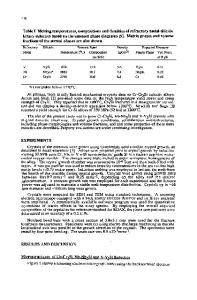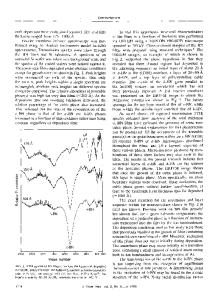Phase Evolution in and Creep Properties of Nb-Rich Nb-Si-Cr Eutectics
- PDF / 2,580,441 Bytes
- 9 Pages / 593.972 x 792 pts Page_size
- 93 Downloads / 253 Views
Phase Evolution in and Creep Properties of Nb-Rich Nb-Si-Cr Eutectics FLORIAN GANG, ALEXANDER KAUFFMANN, and MARTIN HEILMAIER In this work, the Nb-rich ternary eutectic in the Nb-Si-Cr system has been experimentally determined to be Nb-10.9Si-28.4Cr (in at. pct). The eutectic is composed of three main phases: Nb solid solution (Nbss), β-Cr2Nb, and Nb9(Si,Cr)5. The ternary eutectic microstructure remains stable for several hundred hours at a temperature up to 1473 K (1200 °C). At 1573 K (1300 °C) and above, the silicide phase Nb9(Si,Cr)5 decomposes into α-Nb5Si3, Nbss, and βCr2Nb. Under creep conditions at 1473 K (1200 °C), the alloy deforms by dislocation creep while the major creep resistance is provided by the silicide matrix. If the silicide phase is fragmented and, thus, its matrix character is destroyed by prior heat treatment [e.g., at 1773 K (1500 °C) for 100 hours], creep is mainly controlled by the Laves phase β-Cr2Nb, resulting in increased minimum strain rates. Compared to state of the art Ni-based superalloys, the creep resistance of this three-phase eutectic alloy is significantly higher. DOI: 10.1007/s11661-017-4367-4 © The Minerals, Metals & Materials Society and ASM International 2017
I.
INTRODUCTION
DUE to their high melting point and relatively low density, Nb-Si-based alloys are promising novel materials for high-temperature structural applications.[1,2] Unfortunately, good mechanical strength and oxidation resistance at elevated temperatures, as well as sufficient fracture toughness at ambient temperature, are difficult to achieve simultaneously in a satisfactory manner, as the improvement of one property usually comes along at the expense of the other. This challenge may be met by e.g., combining different phases with complementary properties in a fine eutectic microstructure. For example, in the Nb-Si binary system, the binary eutectic Nb18Si (in at. pct) showed a combination of high creep strength subsequent to directional solidification[3] with reasonable fracture toughness[4] due to the presence of the silicide and Nb solid solution (Nbss), respectively. However, this alloying system did not provide acceptable oxidation resistance, as the bulky, porous and nonadherent oxide Nb2O5 is formed. Hence, further alloying additions are necessary to suppress the formation of Nb2O5. For example, Ti, Al, Sn, and Cr are known to increase the oxidation resistance.[5–8] However, only the system Nb-Si-Cr features a Nb-rich ternary eutectic as a prerequisite for later directional solidification.
For this reason, the model system Nb-Si-Cr was selected, where Cr is added to mainly improve the oxidation resistance, by replacing the fast forming, bulky, non-adherent oxide Nb2O5 by dense, adherent CrNbO4 scales.[9] Si is known to improve the creep properties by formation of silicide phases while Nb solid solution (NbSS) provides suitable fracture toughness. However, a literature survey reveals contradictory information on the exact composition of the ternary eutectic in this system. In 2005, Shao calculated the tern
Data Loading...











